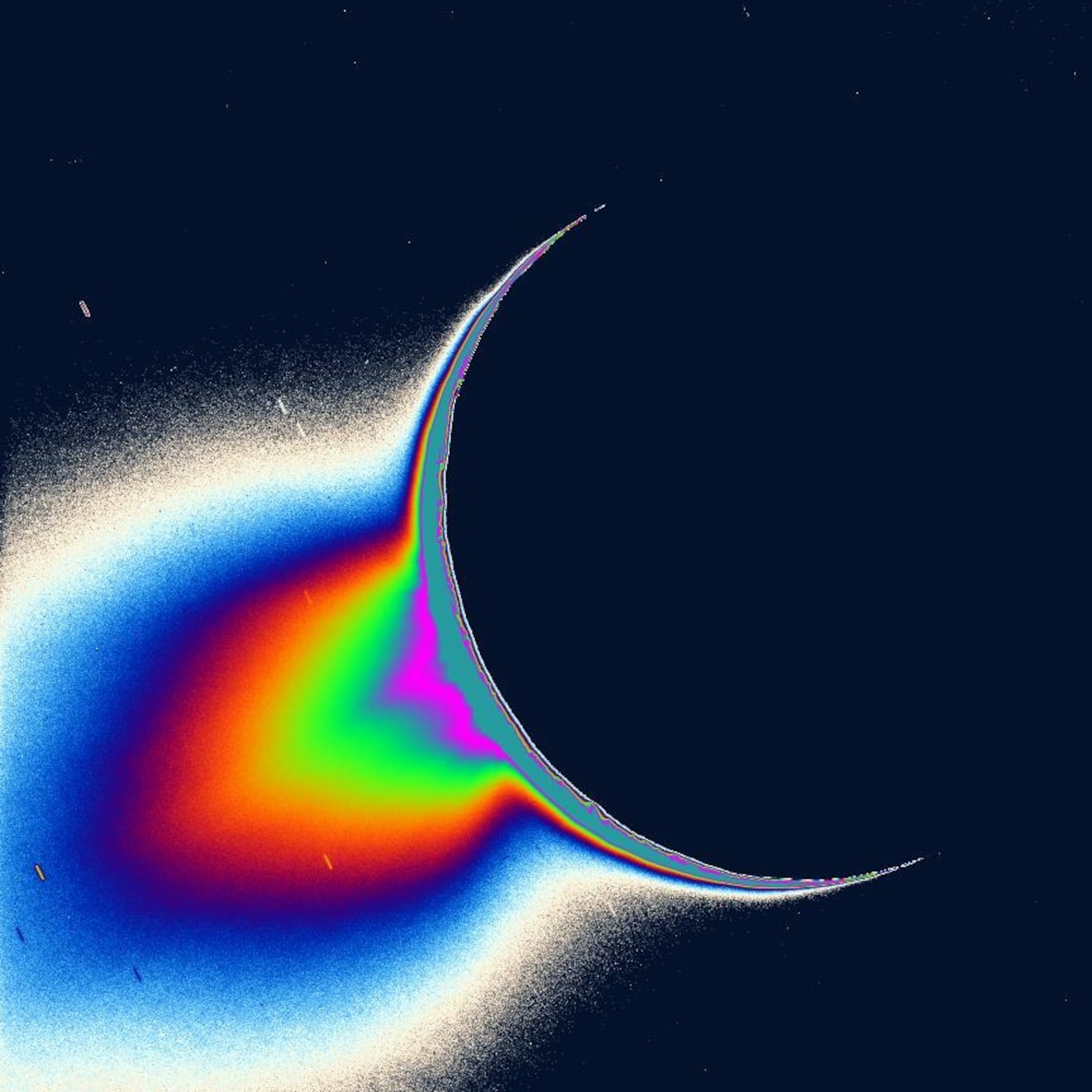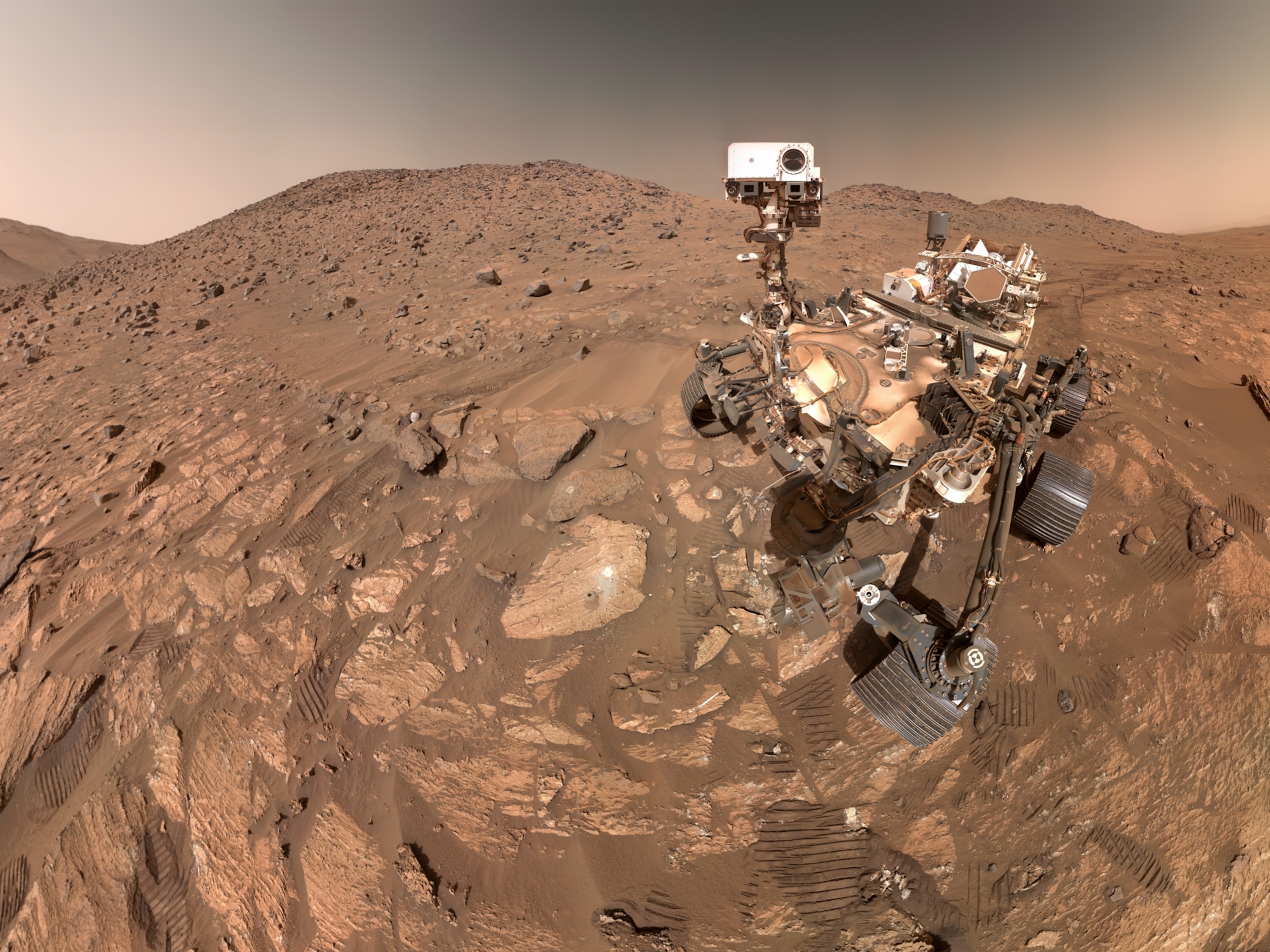Sparkling hollows filled with lustrous crystals, dubbed geodes, are often perceived as small objects that can fit comfortably on a bookshelf. But some are more like gigantic cathedrals filled with a forest of glassy towers.
The Pulpí Geode, found within an abandoned silver mine in 1999 in Spain’s Almería Province, is one of the world’s largest. It's a cavity about 390 cubic feet in volume, with walls adorned with imposing gypsum crystals up to nearly seven feet long. Because of the impressive dimensions of this temple of transparent spires, scientists have long ached to know how it was forged.
As they report this month in the journal Geology, Juan Manuel García-Ruiz at the University of Granada and his colleagues suspect that its formation involved a combination of cannibal chemistry—tiny crystals being feasted on by their bigger siblings—and ancient climate change. (Read more about the dazzling variety of minerals and gems.)
In the new study, García-Ruiz also applied detective techniques from his previous analysis of a site with even larger specimens—the Cave of Crystals, which boasts 36-foot-tall gypsum crystals in Mexico’s Naica Mine. With more research, our understanding of giant geodes will improve with time—and that matters.
“To me, the giant crystals of Naica, or the geode of Pulpí, are like the Egyptian pyramids,” García-Ruiz says. All are remarkable monuments, but those geodes are eons in the making and are literally irreplaceable.
By deciphering their mysteries, he says, we will better appreciate and preserve them for many more eons to come.
Recipes for geodes
“There is no one way to form a geode,” says Gabriela Farfan, an environmental mineralogist at the Smithsonian National Museum of Natural History who wasn’t involved with the study. For many geodes, though, the basic science is somewhat similar.
A rock cavity—holes that were once gas bubbles escaping from magma, cracks created by tectonic activity, and so on—is infiltrated with hydrothermal fluids. Once inside, their dissolved elements can crystallize out on the walls. Stable temperatures, plenty of ingredients, and a plethora of time tend to result in larger crystals.
Gypsum is no exception. Its chemical compound contains calcium sulfate, along with multiple molecules of water. Then you have anhydrite, which is calcium sulfate without the water. Below 136 degrees Fahrenheit, gypsum is the more stable compound, and anhydrite will effortlessly dissolve in water, creating the building blocks for gypsum. When the water is lost, gypsum will crystallize out.
Gypsum, though, has a particular aptitude for forming especially colossal crystals, says Mike Rogerson, an Earth systems scientist at the University of Hull who wasn’t part of the work. Gypsum’s crystal makeup can accommodate a lot of water, producing plenty of volume using a relatively small mass of anhydrite.
This feature alone cannot explain the human-size Pulpí Geode crystals, though.
Favorable climate for crystals
Pulpí’s anhydrite was laid down around 250 million years ago, during the Triassic period, when the Pangaea supercontinent existed and the rise of the dinosaurs had begun. The timing of the gypsum growth is harder to pin down, because the crystals contain few datable impurities, but a radiometrically dated carbonate cap above the crystals means that they formed no later than 60,000 years ago. Based on the timing of the tectonic deformation at the site, they started growing no earlier than two million years ago.
High-temperature minerals such as barite and celestine appeared first. But the hot hydrothermal system eventually waned. Temperatures dropped below that critical 136-degree threshold and eventually settled out at 68 degrees for a long time. With such perfect conditions available, the gypsum crystallized out en masse.
A strange chemical quirk known as Ostwald ripening is also thought to be partly to blame for their hefty size. In this broiling chemical soup, smaller gypsum crystals dissolve back into the mix, where their ingredients were then cannibalized onto the larger crystals, boosting their growth.
At the same time, the subterranean environment experienced temperature oscillations over geological timescales, just inching above and below 68 degrees. During slightly warmer times, those smaller crystals dissolve more easily. During somewhat chillier times, the larger crystals get to grow more. The overall effect of this, García-Ruiz says, is to amplify the ripening process.
As to what caused such tiny temperature fluctuations over such lengthy timescales, the team points the finger at the planet’s natural warming and cooling cycles, driven by wobbles in Earth’s circumnavigation of the sun.
Sign of the times
Chronicling Pulpí’s evolution was more troublesome than in the Cave of Crystals at Naica, which is still an active hydrothermal site, García-Ruiz says. The crystals there are still growing, which makes reverse engineering their evolution a little easier. Pulpí’s hydrothermal activity has been extinguished, making it more akin to a fossil. (Read about weird life found in the Cave of the Crystals.)
Perhaps because of this difficulty, not everything about the Pulpí Geode’s story is crystal clear.
Experimental work crafting crystals in a lab suggests that these temperature swings, not Ostwald ripening, are the dominant mechanism that creates large crystals, Farfan notes. Saying that, Pulpí’s crystals formed over different temperatures and were significantly larger than those lab crystals, so it’s hard to say if the same rules always apply.
Rogerson points out that climatic temperature fluctuations might not be capable of significantly altering the environment around a subterranean geode. Instead, it’s plausible that swings in the underlying geothermal environment itself caused these growth-boosting temperature blips.
Climate change may still have had a role to play, though. Warmer, wetter times would soak the site with more water and promote the dissolution of anhydrite, he says. Colder, drier times would allow lots of gypsum to crystallize out.
Rogerson adds that he appreciates this attempt to unravel the origin story of this geode—or any giant geode, for that matter. Because their developmental histories can be uncertain, the science behind them, and what’s communicated to the public, is sometimes lacking.
“It’s encouraging to take those bits of celebrity geology and give them more substance,” he says.



























